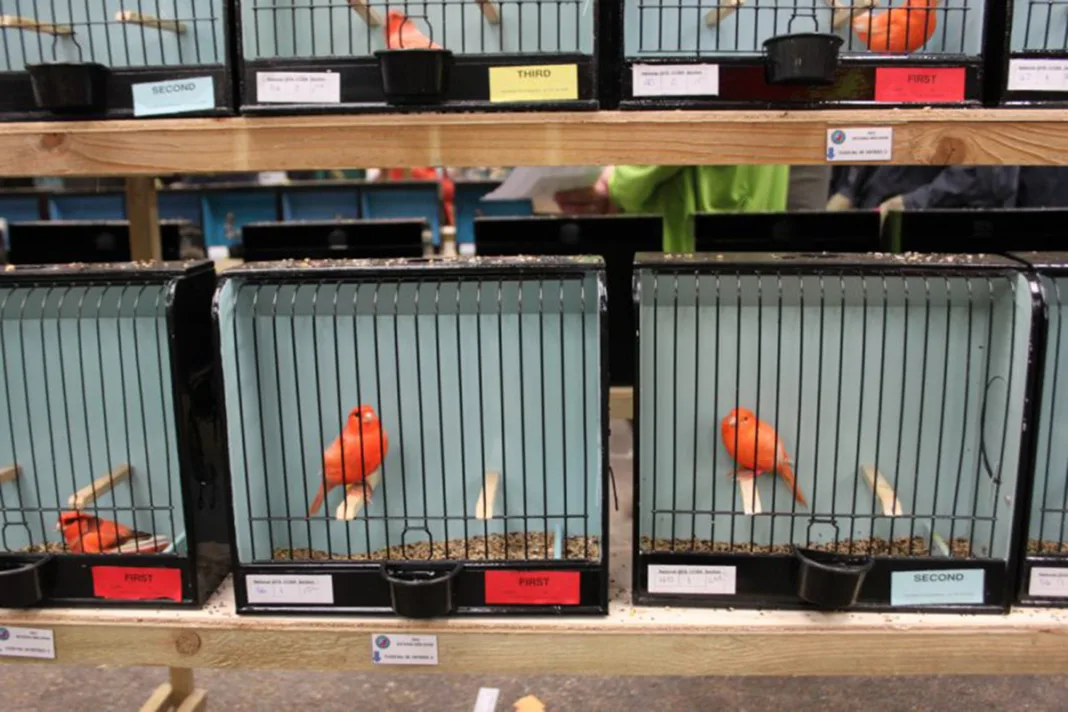Nearly 30 years ago, a document was drawn up suggesting that more than 2,000 avian species would require a licence, including the domesticated canary. Thankfully it got no further, as GRAHAM WELLSTEAD explains, thanks to the help of some German canary breeders and the NCA.
Roller canaries are not part of the normal show scene. A canary is a canary, so why not? All the different varieties of show canaries stem from the same wild canary and still carry the same scientific name source (Serinus canaria) with no domestica tacked onto the end. It may come as a surprise to many people then that in the 1990s, the all-seeing all-knowing EU decided to put out a document for discussion that included more than 2,000 bird species listed by scientific names only, with the suggestion that many were rare and that all required a licence.
The rub with this document was that few people had more than a vague idea of the scientific names of the birds they actually kept, let alone the thousands of others only known to taxonomists and ornithologists. The discussion document had the potential to become a living nightmare for birdkeepers. Although many of the continentals would ignore such a directive, we in the UK have a bureaucracy that frequently turns a single page into a book. Who knew what we could have ended up with?
David Neville, the brilliant National Council for Aviculture (NCA) administrator at the time, realised there were problems and circulated copies to his scientific committee, which included myself. I blinked at the list, trying to take it all in. Like most, I was familiar with quite a number of species but not thousands, and it was clear the list needed to be properly read and understood. One or two species stood out as I scanned through on the first reading, and it became clear as I went further that several were included because other members of the same family were indeed rare or endangered. However, to achieve exemption, the word domestica/domesticus needed to be part of the official name.
Two species jumped out of the page: common starling (Sturnus vulgaris) and house sparrow (Passer domesticus). Today, both species are considered under threat (unless you come to my garden where the house sparrow thrives), but at the time this was not the case. The starling was included and research showed that in winter we have three species resident in the British Isles: the common starling, the winter-visiting Siberian starling (S. v. poltaratskyi) and the resident Shetland starling (S. v. zetlandicus).
The startling difference between these three is a matter of millimetres in bill and wing length. Due to such a minimal variation in size, all three were required to be licenced individually should the programme go ahead.
Owing to the view that the canary was not officially domesticated, it would be included in requiring a licence. If such a tiny variation separates starlings, consider the huge variation in size, colour, and feather type alone in the canary, as we know it. Breeders would need to keep accurate records of eggs laid, chicks hatched, chicks ringed, and chicks and eggs reported as died or failed to hatch.
The licence scheme not only targeted groups of breeding birds, it also included pet birds in the house. I had visions of the elderly lady who kept her pet canary on view in a window, being marched off to the police station for failing to have a licence.
In the end, the whole scheme was shelved, lobbied by the NCA in the form of David Neville and the German canary breeders. There was also no sign of opposition from either the DOE that became DEFRA in 2001, the Ministry of Agriculture, or the veterinary bodies. This tends to suggest that had the legislation been agreed in Brussels, it would have been waived through here for sure. Secretaries of bird clubs, with an average committee of six individuals, would doubtless gasp when I tell you the EU committee that considered this numbered 600.
Graham Wellstead is a roller canary champion of long standing.
Find more news and articles like this on the Cage & Aviary Birds website. Subscribe to Cage & Aviary Birds magazine now.


